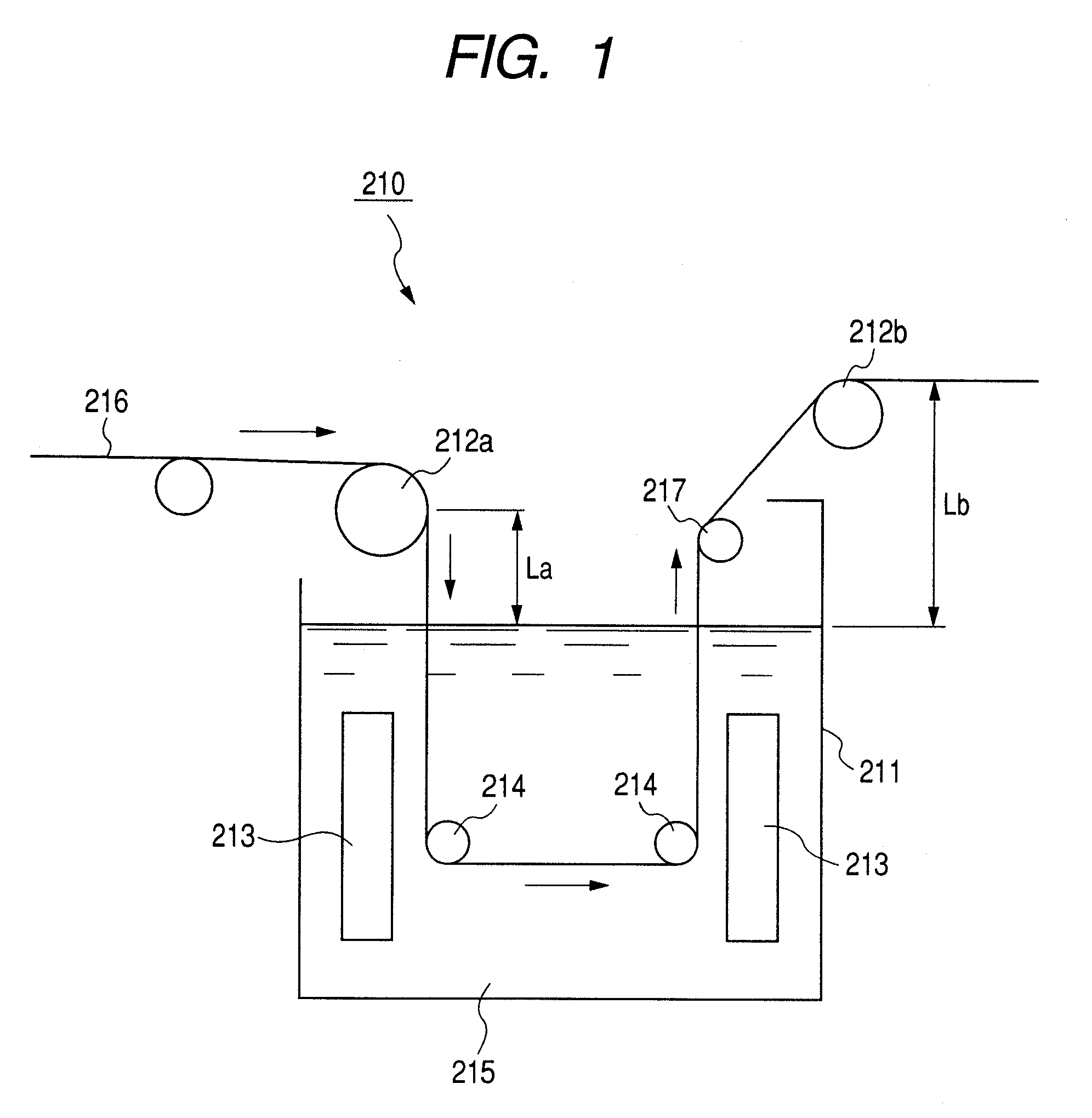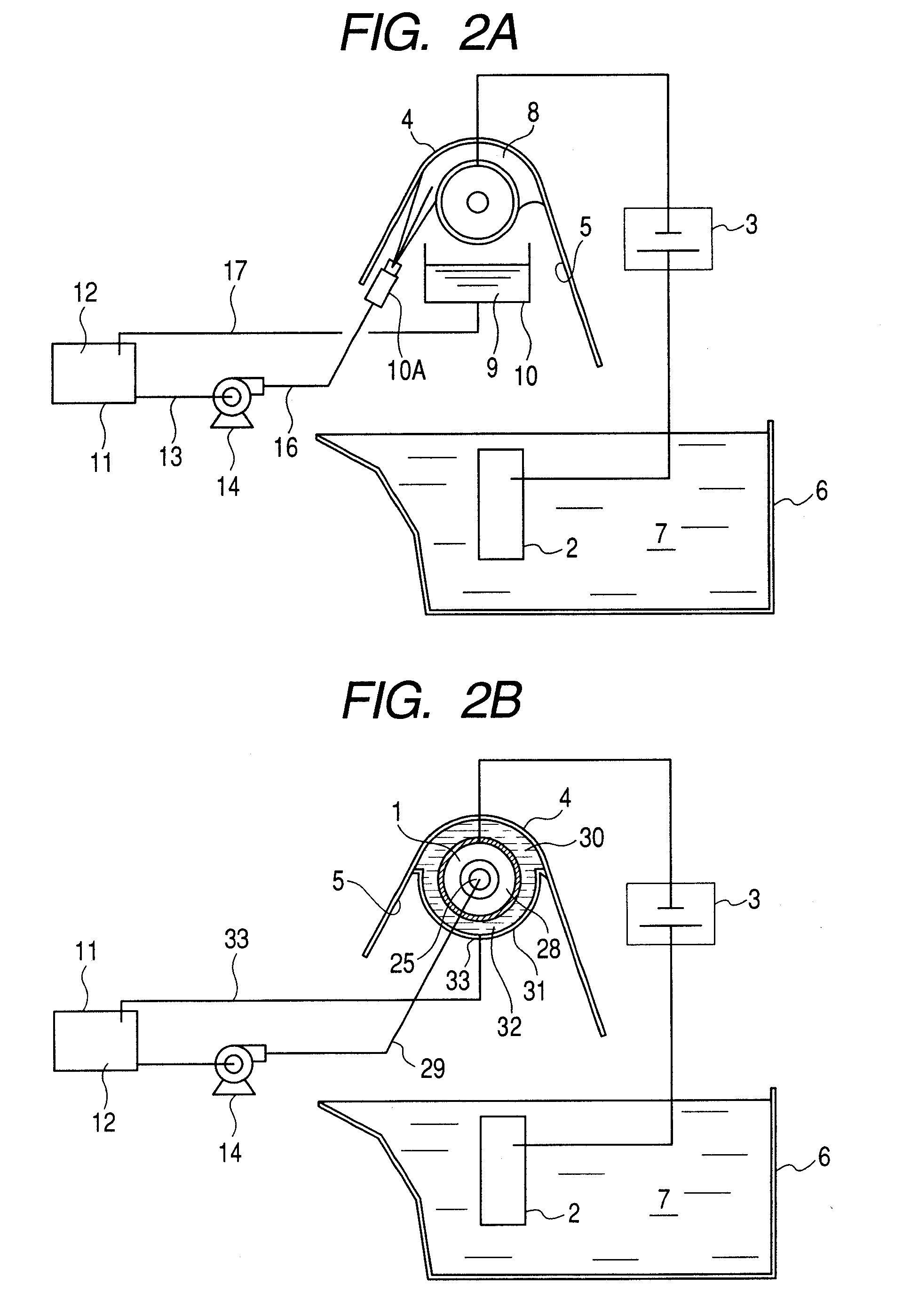Photosensitive material for forming conductive film, conductive film, light transmitting electromagnetic wave shielding film and method for manufacturing the same
a technology of light transmitting electromagnetic wave shielding and photosensitive materials, which is applied in the direction of photosensitive materials, photomechanical equipment, instruments, etc., can solve the problems of affecting the operation of the operator of the apparatus, the malfunction of the electric appliance and interference, and the increase of electromagnetic interference (emi) quickly, and achieves excellent pressure properties, high electromagnetic wave shielding properties, and high transparency
- Summary
- Abstract
- Description
- Claims
- Application Information
AI Technical Summary
Benefits of technology
Problems solved by technology
Method used
Image
Examples
example 1
Preparation of Emulsion A
[0492]Liquid 1:
Water750mLGelatin20gSodium chloride3g1,3-Dimethylimidazolidin-2-thione20mgSodium benzenethiosulfonate10mgCitric acid0.7g
[0493]Liquid 2:
Water300mLSilver nitrate150g
[0494]Liquid 3:
Water300mLSodium chloride38gPotassium bromide32gPotassium hexachloroiridate(III) (0.005% KCl 20% aqueous5mLsolution)Ammonium hexachlororhodinate (0.001% NaCl 20% aqueous7mLsolution)
[0495]Potassium hexachloroiridate(III) (0.005% KCl 20% aqueous solution) and ammonium hexachlororhodinate (0.001% NaCl 20% aqueous solution) used in the liquid 3 were prepared by dissolving a powder in a KCl 20% aqueous solution and an NaCl 20% aqueous solution, respectively and heating at 40° C. for 120 minutes.
[0496]To the liquid 1 kept at 38° C. and a pH of 4.5, the liquid 2 and the liquid 3 were simultaneously added in an amount corresponding to 90%, respectively while stirring over 20 minutes, thereby forming a nucleus particle of 0.16 μm. Subsequently, the following liquid 4 and liquid...
example 2
Preparation of Coated Samples 2-1 to 2-7
[0543]A sample 2-1 was obtained in the exactly same method as in the sample 1-18 used in Example 1.
[0544]Samples were prepared in the same manner as in the coated sample 2-1, except for changing the gelatin amount in the emulsion layer and the coating amount of each of the emulsion layer and the UL layer as shown in Table 2, and samples 2-1 to 2-7 were thus obtained.
[0545]Each of the resulting samples was subjected to the same exposure, development treatment, activation and plating treatment in the same manner as in Example 1 and evaluated for plating progress and pressure resistance. The results are shown in Table 2.
TABLE 2Coating amountTime required forof silverEmulsion layerplatingPressureRelationship withSample No.(g / m2)Ag / binder weightUL layer(min)resistancethe invention2-13.41.8Yes2.95Invention2-2″0.9Yes4.25Invention2-3″2.7Yes1.84.5Invention2-4″1.8—2.93Invention2-51.72.7Yes3.35Invention2-6″″—2.24Invention2-7″0.9Yes5.45Invention
[0546]The ...
example 3
[0547]Samples were prepared in the same manner as in the respective samples 1-1 to 1-20 as prepared in Example 1, except for changing the spectral sensitizing coloring matter SD-1 to the following SD-2, changing the Cpd-14 to the following Cpd-YF and not providing the back layer, and samples 3-1 to 3-20 were thus obtained. Here, the coating amounts of SD-2 and Cpd-YF were the same amounts (moles / in2) of SD-1 and Cpd-14, respectively.
[0548]Each of the resulting samples was exposed by a contact printer using a high mercury vapor pressure lamp as a light source via a mesh-like photomask having a fine line width of 10 μm and a lattice-to-lattice space of 300 μm, and then subjected to the same development treatment, activation and plating treatment in the same manner as in Example 1 and evaluated for plating progress and pressure resistance. As a result of the evaluation as in Example 1, excellent effects of the invention were confirmed.
PUM
| Property | Measurement | Unit |
|---|---|---|
| weight ratio | aaaaa | aaaaa |
| transparency | aaaaa | aaaaa |
| visible light transmittance | aaaaa | aaaaa |
Abstract
Description
Claims
Application Information
 Login to View More
Login to View More - R&D
- Intellectual Property
- Life Sciences
- Materials
- Tech Scout
- Unparalleled Data Quality
- Higher Quality Content
- 60% Fewer Hallucinations
Browse by: Latest US Patents, China's latest patents, Technical Efficacy Thesaurus, Application Domain, Technology Topic, Popular Technical Reports.
© 2025 PatSnap. All rights reserved.Legal|Privacy policy|Modern Slavery Act Transparency Statement|Sitemap|About US| Contact US: help@patsnap.com



